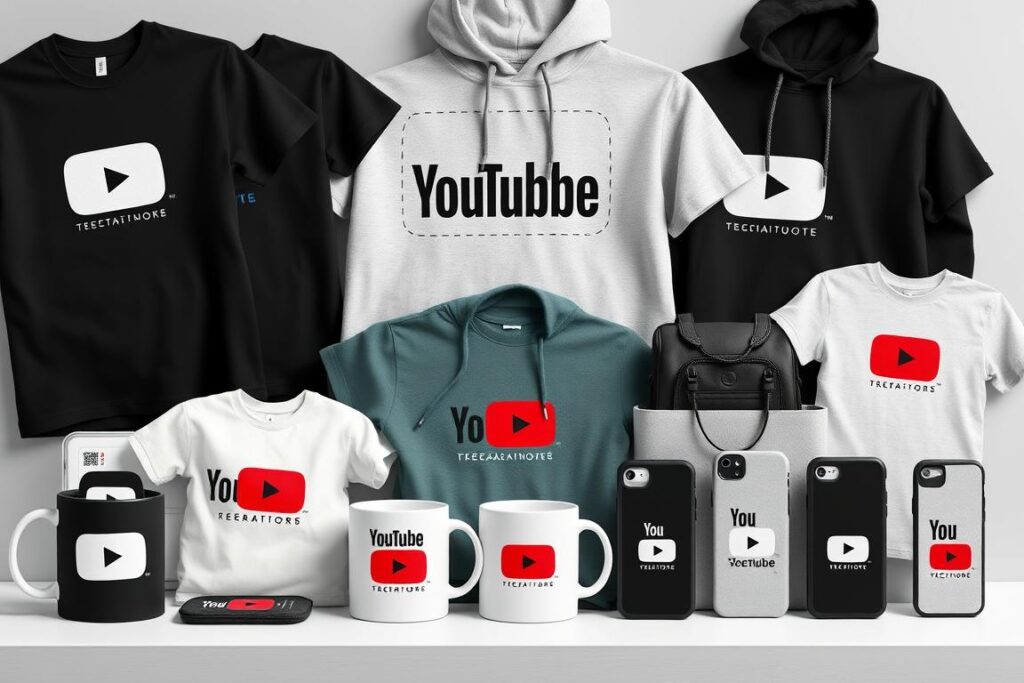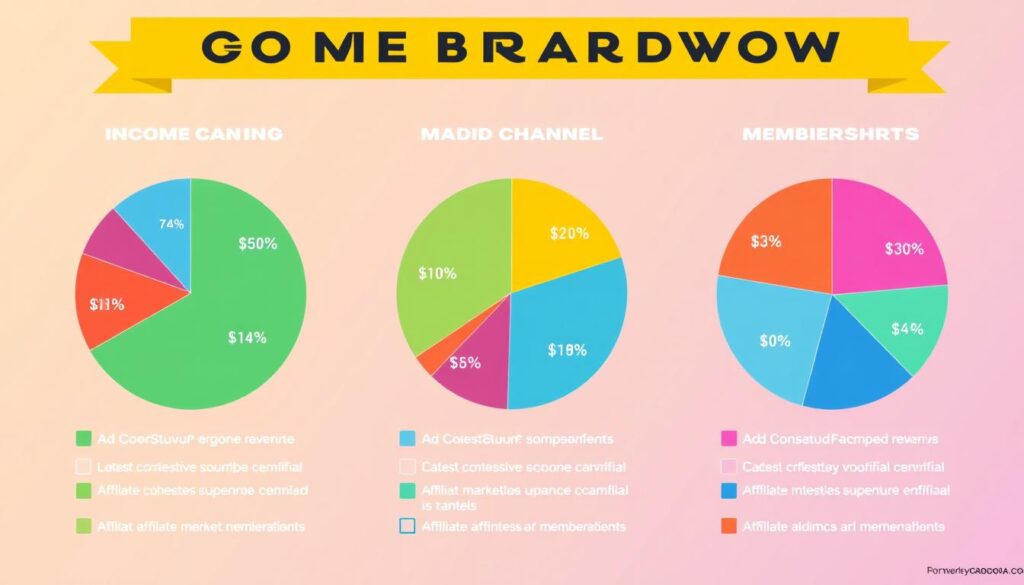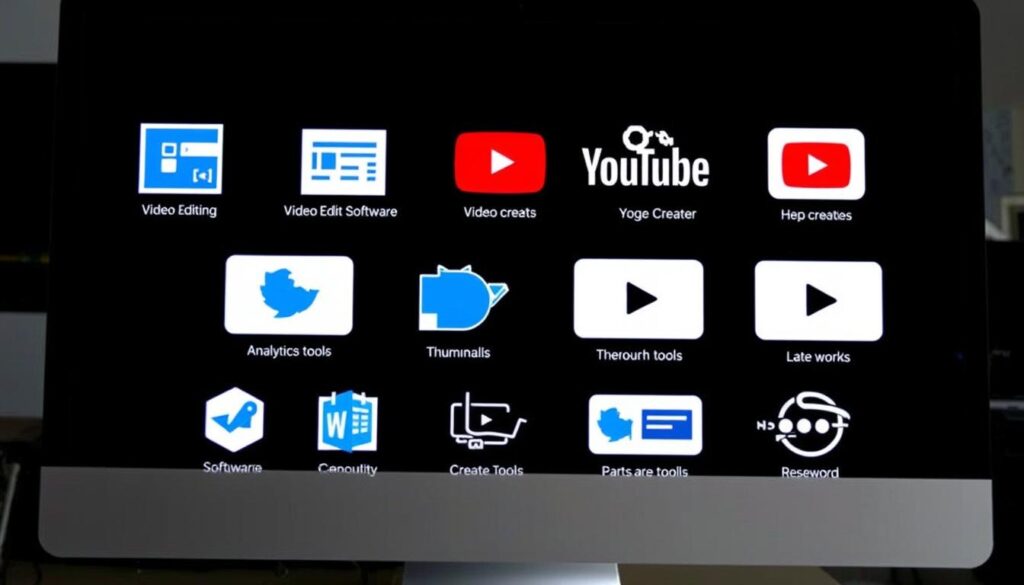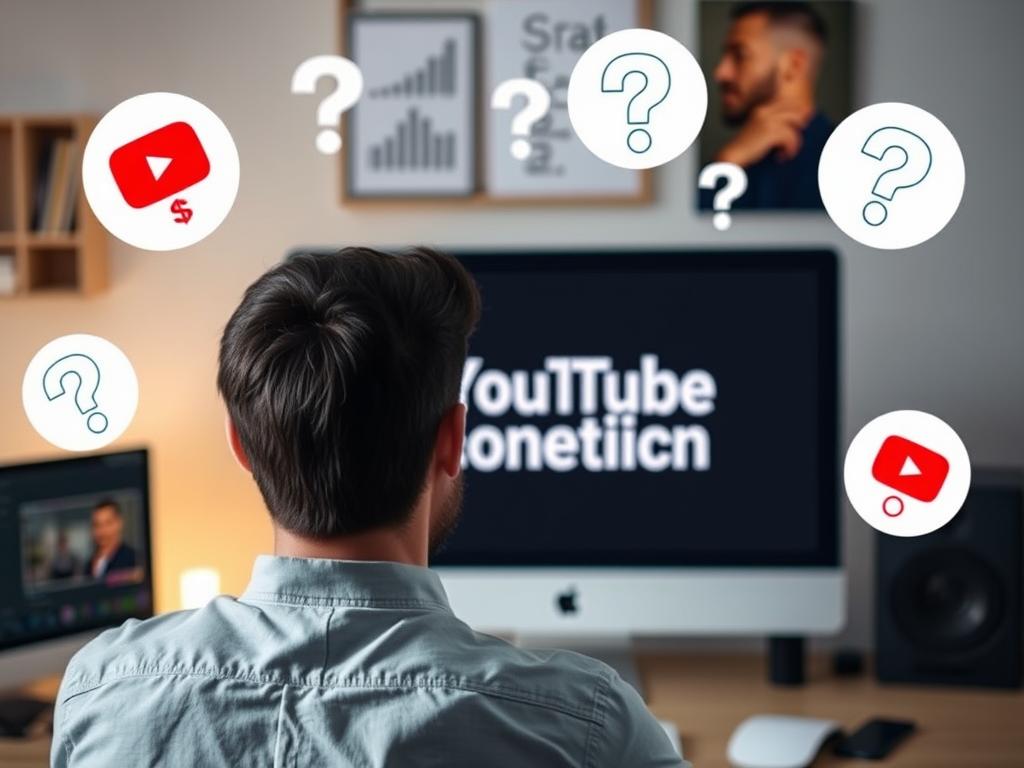Get Your Free YouTube Monetization Checklist
Download our comprehensive checklist to track your progress toward YouTube monetization eligibility and implement all revenue streams covered in this guide.
YouTube Partner Program: Eligibility Requirements
Before diving into monetization strategies, it’s essential to understand the YouTube Partner Program (YPP) requirements. The YPP is YouTube’s official monetization program that gives creators access to multiple revenue streams.

Standard YPP Eligibility (Full Access)
- 1,000 subscribers minimum
- Either 4,000 watch hours in the past 12 months OR 10 million Shorts views in the past 90 days
- An active AdSense account
- Compliance with all YouTube policies and guidelines
- Based in a country/region where the YPP is available
Lower-Tier YPP Eligibility (Limited Access)
- 500 subscribers minimum
- 3 public uploads in the last 90 days
- Either 3,000 watch hours in the past year OR 3 million Shorts views in the past 90 days
Meeting these requirements allows you to apply for the YouTube Partner Program through YouTube Studio. Once approved, you’ll gain access to various monetization features that we’ll explore in this guide.
7 Proven Ways to Make Money Through YouTube
YouTube offers multiple revenue streams for creators. Let’s explore the most effective monetization methods in 2025:
1. YouTube Ad Revenue
Ad revenue is the most well-known monetization method on YouTube. Once you’re accepted into the YPP, you can enable ads on your videos and earn a share of the revenue generated.
How Ad Revenue Works:
- YouTube places ads before, during, or after your videos
- You earn approximately $2-$5 per 1,000 views (varies by niche, audience location, and engagement)
- YouTube takes 45% of ad revenue, while you receive 55%
- Payments are processed through AdSense once you reach the $100 threshold
Ad Types:
- Display ads: Appear to the right of the video or above video suggestions
- Overlay ads: Semi-transparent ads that appear on the lower portion of your video
- Skippable video ads: Ads viewers can skip after 5 seconds
- Non-skippable video ads: 15-20 second ads viewers must watch
- Bumper ads: Non-skippable 6-second ads
To maximize ad revenue, create longer videos (8+ minutes) to qualify for mid-roll ads, and focus on topics with higher CPM (Cost Per Mille) rates, such as finance, technology, and business.
2. Brand Sponsorships and Partnerships
Brand deals often become the largest income source for established creators. These partnerships involve promoting products or services in your videos in exchange for payment.

How to Attract Brand Deals:
- Create a professional media kit highlighting your channel statistics, audience demographics, and previous collaborations
- Join influencer marketing platforms like Aspire, Hashtag Paid, and Popular Pays
- Reach out directly to brands that align with your content and audience
- Demonstrate your value by sharing engagement metrics and audience trust
- Start with smaller brands in your niche to build a portfolio
Pricing Your Sponsorships:
A common formula for calculating sponsorship rates is $0.05-$0.15 per view multiplied by your average view count. For example, if your videos typically get 10,000 views, you might charge $500-$1,500 per sponsored video. Factors like audience engagement, niche, and exclusivity requirements will affect your rates.
Pro Tip: Always disclose sponsored content to your audience and only promote products you genuinely believe in. Authenticity builds trust, which is essential for long-term channel growth.
3. Affiliate Marketing
Affiliate marketing allows you to earn commissions by promoting other companies’ products or services. When viewers purchase through your unique affiliate links, you receive a percentage of the sale.
Effective Affiliate Marketing Strategies:
- Create honest product reviews and tutorials that showcase the benefits
- Add affiliate links in your video descriptions with clear disclosure
- Use YouTube’s Shopping affiliate program to tag products directly in your videos
- Focus on products that genuinely solve your audience’s problems
- Track performance with unique discount codes to measure conversion rates
Popular Affiliate Programs:
- Amazon Associates (4-10% commission)
- ShareASale (varies by merchant)
- Impact (varies by merchant)
- CJ Affiliate (varies by merchant)
- YouTube Shopping affiliate program
Best Practices:
- Always disclose affiliate relationships
- Focus on high-quality products with good commission rates
- Create dedicated tutorial or review videos
- Use trackable links to measure performance
- Test different call-to-actions to optimize conversions
4. Selling Products and Merchandise
Creating and selling your own products can be highly profitable once you’ve built a loyal audience. This can include physical merchandise or digital products.

Physical Products:
- Branded merchandise (t-shirts, hoodies, mugs)
- Print-on-demand services like Printful, Printify, or Spring
- Custom products related to your niche
- Limited edition collections to create scarcity
Digital Products:
- Online courses expanding on your YouTube content
- Ebooks and guides with in-depth information
- Templates, presets, or digital tools
- Premium video content not available on your channel
Use YouTube Shopping features to connect your online store to your channel, allowing viewers to shop directly from your videos. Shopify, Etsy, and WooCommerce offer seamless integration with YouTube.
Ready to Launch Your YouTube Merch Store?
Get our step-by-step guide to setting up a print-on-demand store that integrates with your YouTube channel.
5. Channel Memberships and Fan Funding
YouTube offers several features that allow your audience to support you directly through recurring memberships or one-time payments.
Channel Memberships:
- Monthly subscription offering exclusive perks
- Custom badges and emojis for members
- Members-only content and community posts
- Priority replies in comments
- Available with 500+ subscribers in the YPP
Super Features:
- Super Chat: Highlighted messages during livestreams
- Super Stickers: Animated stickers in live chat
- Super Thanks: One-time tips on regular videos
- Available with 500+ subscribers in the YPP
You can also use external platforms like Patreon, Ko-fi, or Buy Me a Coffee to offer membership tiers with exclusive benefits outside of YouTube’s ecosystem.
6. YouTube Premium Revenue
When YouTube Premium subscribers watch your content, you earn a portion of their subscription fee based on watch time. This revenue is in addition to regular ad revenue and requires no extra work on your part.
To maximize Premium revenue:
- Create longer, engaging content that keeps viewers watching
- Upload consistently to increase total watch time
- Build a library of evergreen content that continues to attract views
7. License Your Content
If you create unique or viral content, you can license it to media outlets, brands, or other creators who want to use your footage.
- Register with content licensing platforms like Jukin Media
- Add “For licensing, contact: [email]” in your video descriptions
- Protect your content with proper copyright registration
- Negotiate fair rates based on usage rights and exclusivity
Optimizing Your Content for Maximum Revenue
Creating great content is only half the battle. To maximize your earning potential, you need to optimize your videos for discovery and engagement.

SEO Optimization
- Keyword Research: Use tools like TubeBuddy, vidIQ, or Google Keyword Planner to find high-volume, low-competition keywords
- Optimized Titles: Include your main keyword in the first half of your title
- Detailed Descriptions: Write 200+ word descriptions with keywords naturally placed throughout
- Strategic Tags: Include specific and broad tags related to your content
- Custom Thumbnails: Create eye-catching thumbnails with clear text and high contrast
Audience Retention Strategies
Higher watch time directly correlates with better monetization opportunities. Improve retention with these techniques:
- Start with a strong hook in the first 15 seconds
- Create a content pattern that viewers can recognize and anticipate
- Use pattern interrupts (scene changes, graphics, sound effects) every 30-60 seconds
- Add timestamps to help viewers navigate longer videos
- End videos with a compelling reason to watch another video
Engagement Optimization
Higher engagement signals to YouTube that your content is valuable, leading to more recommendations:
- Ask specific questions to encourage comments
- Create interactive elements like polls in your community tab
- Respond to comments to foster community
- Include clear calls-to-action for likes, subscriptions, and shares
- Use end screens and cards to promote related content
Boost Your YouTube SEO
Get access to our curated list of the best YouTube optimization tools, including free and premium options for creators at every level.
Real-Life Success Stories: YouTube Income Breakdowns
Understanding how successful creators monetize their channels can provide valuable insights for your own strategy. Here are three case studies with real income breakdowns:

Case Study 1: Tech Review Channel (1M Subscribers)
Channel Focus: Technology reviews and tutorials
Upload Frequency: 2 videos per week
Average Views: 200,000 per video
Monthly Income Breakdown:
- Ad Revenue: $8,000-$12,000 (high CPM niche)
- Sponsorships: $15,000-$20,000 (2-3 sponsored videos per month)
- Affiliate Marketing: $5,000-$7,000 (tech products with high commissions)
- Channel Memberships: $2,000-$3,000 (early access to videos)
- Merchandise: $1,000-$2,000 (branded tech accessories)
Total Monthly Income: $31,000-$44,000
Key Strategy: Focusing on high-value tech products with strong affiliate programs and building relationships with technology brands for recurring sponsorships.
Case Study 2: Fitness Channel (500K Subscribers)
Channel Focus: Workout routines and nutrition advice
Upload Frequency: 3 videos per week
Average Views: 75,000 per video
Monthly Income Breakdown:
- Ad Revenue: $2,000-$3,500 (moderate CPM niche)
- Digital Products: $8,000-$12,000 (fitness programs and meal plans)
- Sponsorships: $5,000-$7,000 (1-2 sponsored videos per month)
- Affiliate Marketing: $1,500-$2,500 (fitness equipment and supplements)
- Channel Memberships: $3,000-$4,000 (exclusive workout videos)
Total Monthly Income: $19,500-$29,000
Key Strategy: Creating premium digital products that expand on free YouTube content and building a community through channel memberships with exclusive workouts.
Case Study 3: Educational Channel (250K Subscribers)
Channel Focus: Learning skills and personal development
Upload Frequency: 1 video per week
Average Views: 50,000 per video
Monthly Income Breakdown:
- Ad Revenue: $1,000-$2,000 (moderate CPM niche)
- Online Courses: $5,000-$8,000 (in-depth courses on platforms like Teachable)
- Sponsorships: $2,000-$3,000 (1 sponsored video per month)
- Affiliate Marketing: $1,000-$1,500 (books and learning resources)
- Patreon: $2,500-$3,500 (bonus content and community)
Total Monthly Income: $11,500-$18,000
Key Strategy: Using YouTube as a lead generation tool for more comprehensive paid courses while building a loyal community on Patreon.
Important Note: These case studies represent established channels. Most creators start with much lower earnings and gradually build multiple revenue streams over time. Consistency and quality are key to long-term success.
Get the Full Case Study Breakdown
Download our detailed analysis of 10 successful YouTube channels across different niches with complete income breakdowns and growth strategies.
Common Monetization Mistakes to Avoid
Even with great content, these common mistakes can limit your earning potential on YouTube:

Content Mistakes
- Copyright Violations: Using copyrighted music, footage, or images without permission
- Inconsistent Uploads: Irregular posting schedule that confuses the algorithm
- Poor Quality: Low production value that drives viewers away
- Ignoring Analytics: Not using data to inform content decisions
- Clickbait: Misleading titles and thumbnails that damage trust
Monetization Mistakes
- Overmonetization: Too many ads or sponsorships that annoy viewers
- Undervaluing Your Work: Charging too little for sponsored content
- Promoting Low-Quality Products: Damaging trust with poor recommendations
- Ignoring Alternative Revenue Streams: Relying solely on ad revenue
- Not Disclosing Partnerships: Failing to disclose sponsored content
“The biggest mistake new creators make is focusing too much on monetization before building a loyal audience. Focus first on creating value consistently, and the monetization opportunities will follow.”
Essential Tools and Resources for YouTube Creators
The right tools can significantly improve your content quality and channel growth. Here are some essential resources for YouTube creators:

Video Production Tools
Free Options
- DaVinci Resolve (editing)
- GIMP (graphics)
- Canva Free (thumbnails)
- OBS Studio (screen recording)
- Audacity (audio editing)
Paid Options
- Adobe Premiere Pro (editing)
- Final Cut Pro (editing)
- Adobe Photoshop (graphics)
- Camtasia (screen recording)
- Descript (audio editing)
Hardware
- Ring light ($20-$100)
- Lavalier microphone ($20-$200)
- Tripod ($15-$100)
- Green screen ($40-$150)
- External hard drive ($50-$200)
YouTube Optimization Tools
Keyword Research
- TubeBuddy (Free/Premium)
- vidIQ (Free/Premium)
- Google Keyword Planner (Free)
- Keywords Everywhere (Paid)
- Ahrefs (Paid)
Analytics
- YouTube Studio (Free)
- Social Blade (Free/Premium)
- Morningfame (Paid)
- TubeBuddy Analytics (Free/Premium)
- Google Analytics (Free)
Thumbnail Creation
- Canva (Free/Premium)
- Adobe Express (Free/Premium)
- Snappa (Free/Premium)
- Pixlr (Free/Premium)
- Fotor (Free/Premium)
Get Our Complete YouTube Tool Kit
Access our comprehensive guide to the best YouTube tools with exclusive discount codes for premium software.
Frequently Asked Questions

How many views do you need to make
Frequently Asked Questions

How many views do you need to make $1,000 on YouTube?
The number of views needed to earn $1,000 varies significantly based on your niche, audience location, and engagement. On average, you might need between 200,000 to 500,000 views to earn $1,000 from ad revenue alone. Channels in high-value niches like finance or business might earn $1,000 with fewer views, while entertainment channels might need more. Combining multiple revenue streams (sponsorships, affiliate marketing, etc.) can help you reach $1,000 with fewer views.
How long does it take to monetize a YouTube channel?
The timeline varies greatly depending on your content quality, niche, and posting consistency. Some creators reach the YouTube Partner Program requirements (1,000 subscribers and 4,000 watch hours) within 3-6 months, while others might take 1-2 years. Focus on creating valuable content consistently rather than fixating on monetization timelines. Remember that you can start with affiliate marketing and brand partnerships even before reaching YPP eligibility.
What types of YouTube content make the most money?
Generally, content in the finance, business, technology, and personal development niches tends to earn higher ad rates due to valuable audience demographics. However, any niche can be profitable with the right monetization strategy. The most successful channels typically combine ad revenue with multiple other income streams like sponsorships, digital products, and affiliate marketing. Focus on creating content that serves a specific audience well rather than chasing high-paying niches you’re not passionate about.
Can I monetize YouTube Shorts?
Yes, YouTube Shorts can be monetized through the YouTube Partner Program’s Shorts monetization features. To qualify, you need either 1,000 subscribers and 10 million Shorts views in the last 90 days (for full monetization) or 500 subscribers and 3 million Shorts views (for limited monetization). The Shorts revenue-sharing program distributes money based on views and engagement. While the revenue per view is typically lower than for long-form content, Shorts can help grow your audience quickly and lead to other monetization opportunities.
Do I need expensive equipment to start making money on YouTube?
No, you don’t need expensive equipment to start. Many successful creators began with smartphone cameras and basic lighting. Focus first on creating valuable content consistently. As your channel grows, you can gradually invest in better equipment. The most important initial investments are decent audio quality (a simple lavalier microphone) and adequate lighting (even a well-positioned window or basic ring light). Content quality and consistency matter more than production value when building an audience.
,000 on YouTube?
The number of views needed to earn
Frequently Asked Questions

How many views do you need to make $1,000 on YouTube?
The number of views needed to earn $1,000 varies significantly based on your niche, audience location, and engagement. On average, you might need between 200,000 to 500,000 views to earn $1,000 from ad revenue alone. Channels in high-value niches like finance or business might earn $1,000 with fewer views, while entertainment channels might need more. Combining multiple revenue streams (sponsorships, affiliate marketing, etc.) can help you reach $1,000 with fewer views.
How long does it take to monetize a YouTube channel?
The timeline varies greatly depending on your content quality, niche, and posting consistency. Some creators reach the YouTube Partner Program requirements (1,000 subscribers and 4,000 watch hours) within 3-6 months, while others might take 1-2 years. Focus on creating valuable content consistently rather than fixating on monetization timelines. Remember that you can start with affiliate marketing and brand partnerships even before reaching YPP eligibility.
What types of YouTube content make the most money?
Generally, content in the finance, business, technology, and personal development niches tends to earn higher ad rates due to valuable audience demographics. However, any niche can be profitable with the right monetization strategy. The most successful channels typically combine ad revenue with multiple other income streams like sponsorships, digital products, and affiliate marketing. Focus on creating content that serves a specific audience well rather than chasing high-paying niches you’re not passionate about.
Can I monetize YouTube Shorts?
Yes, YouTube Shorts can be monetized through the YouTube Partner Program’s Shorts monetization features. To qualify, you need either 1,000 subscribers and 10 million Shorts views in the last 90 days (for full monetization) or 500 subscribers and 3 million Shorts views (for limited monetization). The Shorts revenue-sharing program distributes money based on views and engagement. While the revenue per view is typically lower than for long-form content, Shorts can help grow your audience quickly and lead to other monetization opportunities.
Do I need expensive equipment to start making money on YouTube?
No, you don’t need expensive equipment to start. Many successful creators began with smartphone cameras and basic lighting. Focus first on creating valuable content consistently. As your channel grows, you can gradually invest in better equipment. The most important initial investments are decent audio quality (a simple lavalier microphone) and adequate lighting (even a well-positioned window or basic ring light). Content quality and consistency matter more than production value when building an audience.
,000 varies significantly based on your niche, audience location, and engagement. On average, you might need between 200,000 to 500,000 views to earn
Frequently Asked Questions

How many views do you need to make $1,000 on YouTube?
The number of views needed to earn $1,000 varies significantly based on your niche, audience location, and engagement. On average, you might need between 200,000 to 500,000 views to earn $1,000 from ad revenue alone. Channels in high-value niches like finance or business might earn $1,000 with fewer views, while entertainment channels might need more. Combining multiple revenue streams (sponsorships, affiliate marketing, etc.) can help you reach $1,000 with fewer views.
How long does it take to monetize a YouTube channel?
The timeline varies greatly depending on your content quality, niche, and posting consistency. Some creators reach the YouTube Partner Program requirements (1,000 subscribers and 4,000 watch hours) within 3-6 months, while others might take 1-2 years. Focus on creating valuable content consistently rather than fixating on monetization timelines. Remember that you can start with affiliate marketing and brand partnerships even before reaching YPP eligibility.
What types of YouTube content make the most money?
Generally, content in the finance, business, technology, and personal development niches tends to earn higher ad rates due to valuable audience demographics. However, any niche can be profitable with the right monetization strategy. The most successful channels typically combine ad revenue with multiple other income streams like sponsorships, digital products, and affiliate marketing. Focus on creating content that serves a specific audience well rather than chasing high-paying niches you’re not passionate about.
Can I monetize YouTube Shorts?
Yes, YouTube Shorts can be monetized through the YouTube Partner Program’s Shorts monetization features. To qualify, you need either 1,000 subscribers and 10 million Shorts views in the last 90 days (for full monetization) or 500 subscribers and 3 million Shorts views (for limited monetization). The Shorts revenue-sharing program distributes money based on views and engagement. While the revenue per view is typically lower than for long-form content, Shorts can help grow your audience quickly and lead to other monetization opportunities.
Do I need expensive equipment to start making money on YouTube?
No, you don’t need expensive equipment to start. Many successful creators began with smartphone cameras and basic lighting. Focus first on creating valuable content consistently. As your channel grows, you can gradually invest in better equipment. The most important initial investments are decent audio quality (a simple lavalier microphone) and adequate lighting (even a well-positioned window or basic ring light). Content quality and consistency matter more than production value when building an audience.
,000 from ad revenue alone. Channels in high-value niches like finance or business might earn
Frequently Asked Questions

How many views do you need to make $1,000 on YouTube?
The number of views needed to earn $1,000 varies significantly based on your niche, audience location, and engagement. On average, you might need between 200,000 to 500,000 views to earn $1,000 from ad revenue alone. Channels in high-value niches like finance or business might earn $1,000 with fewer views, while entertainment channels might need more. Combining multiple revenue streams (sponsorships, affiliate marketing, etc.) can help you reach $1,000 with fewer views.
How long does it take to monetize a YouTube channel?
The timeline varies greatly depending on your content quality, niche, and posting consistency. Some creators reach the YouTube Partner Program requirements (1,000 subscribers and 4,000 watch hours) within 3-6 months, while others might take 1-2 years. Focus on creating valuable content consistently rather than fixating on monetization timelines. Remember that you can start with affiliate marketing and brand partnerships even before reaching YPP eligibility.
What types of YouTube content make the most money?
Generally, content in the finance, business, technology, and personal development niches tends to earn higher ad rates due to valuable audience demographics. However, any niche can be profitable with the right monetization strategy. The most successful channels typically combine ad revenue with multiple other income streams like sponsorships, digital products, and affiliate marketing. Focus on creating content that serves a specific audience well rather than chasing high-paying niches you’re not passionate about.
Can I monetize YouTube Shorts?
Yes, YouTube Shorts can be monetized through the YouTube Partner Program’s Shorts monetization features. To qualify, you need either 1,000 subscribers and 10 million Shorts views in the last 90 days (for full monetization) or 500 subscribers and 3 million Shorts views (for limited monetization). The Shorts revenue-sharing program distributes money based on views and engagement. While the revenue per view is typically lower than for long-form content, Shorts can help grow your audience quickly and lead to other monetization opportunities.
Do I need expensive equipment to start making money on YouTube?
No, you don’t need expensive equipment to start. Many successful creators began with smartphone cameras and basic lighting. Focus first on creating valuable content consistently. As your channel grows, you can gradually invest in better equipment. The most important initial investments are decent audio quality (a simple lavalier microphone) and adequate lighting (even a well-positioned window or basic ring light). Content quality and consistency matter more than production value when building an audience.
,000 with fewer views, while entertainment channels might need more. Combining multiple revenue streams (sponsorships, affiliate marketing, etc.) can help you reach
Frequently Asked Questions

How many views do you need to make $1,000 on YouTube?
The number of views needed to earn $1,000 varies significantly based on your niche, audience location, and engagement. On average, you might need between 200,000 to 500,000 views to earn $1,000 from ad revenue alone. Channels in high-value niches like finance or business might earn $1,000 with fewer views, while entertainment channels might need more. Combining multiple revenue streams (sponsorships, affiliate marketing, etc.) can help you reach $1,000 with fewer views.
How long does it take to monetize a YouTube channel?
The timeline varies greatly depending on your content quality, niche, and posting consistency. Some creators reach the YouTube Partner Program requirements (1,000 subscribers and 4,000 watch hours) within 3-6 months, while others might take 1-2 years. Focus on creating valuable content consistently rather than fixating on monetization timelines. Remember that you can start with affiliate marketing and brand partnerships even before reaching YPP eligibility.
What types of YouTube content make the most money?
Generally, content in the finance, business, technology, and personal development niches tends to earn higher ad rates due to valuable audience demographics. However, any niche can be profitable with the right monetization strategy. The most successful channels typically combine ad revenue with multiple other income streams like sponsorships, digital products, and affiliate marketing. Focus on creating content that serves a specific audience well rather than chasing high-paying niches you’re not passionate about.
Can I monetize YouTube Shorts?
Yes, YouTube Shorts can be monetized through the YouTube Partner Program’s Shorts monetization features. To qualify, you need either 1,000 subscribers and 10 million Shorts views in the last 90 days (for full monetization) or 500 subscribers and 3 million Shorts views (for limited monetization). The Shorts revenue-sharing program distributes money based on views and engagement. While the revenue per view is typically lower than for long-form content, Shorts can help grow your audience quickly and lead to other monetization opportunities.
Do I need expensive equipment to start making money on YouTube?
No, you don’t need expensive equipment to start. Many successful creators began with smartphone cameras and basic lighting. Focus first on creating valuable content consistently. As your channel grows, you can gradually invest in better equipment. The most important initial investments are decent audio quality (a simple lavalier microphone) and adequate lighting (even a well-positioned window or basic ring light). Content quality and consistency matter more than production value when building an audience.
,000 with fewer views.
How long does it take to monetize a YouTube channel?
The timeline varies greatly depending on your content quality, niche, and posting consistency. Some creators reach the YouTube Partner Program requirements (1,000 subscribers and 4,000 watch hours) within 3-6 months, while others might take 1-2 years. Focus on creating valuable content consistently rather than fixating on monetization timelines. Remember that you can start with affiliate marketing and brand partnerships even before reaching YPP eligibility.
What types of YouTube content make the most money?
Generally, content in the finance, business, technology, and personal development niches tends to earn higher ad rates due to valuable audience demographics. However, any niche can be profitable with the right monetization strategy. The most successful channels typically combine ad revenue with multiple other income streams like sponsorships, digital products, and affiliate marketing. Focus on creating content that serves a specific audience well rather than chasing high-paying niches you’re not passionate about.
Can I monetize YouTube Shorts?
Yes, YouTube Shorts can be monetized through the YouTube Partner Program’s Shorts monetization features. To qualify, you need either 1,000 subscribers and 10 million Shorts views in the last 90 days (for full monetization) or 500 subscribers and 3 million Shorts views (for limited monetization). The Shorts revenue-sharing program distributes money based on views and engagement. While the revenue per view is typically lower than for long-form content, Shorts can help grow your audience quickly and lead to other monetization opportunities.
Do I need expensive equipment to start making money on YouTube?
No, you don’t need expensive equipment to start. Many successful creators began with smartphone cameras and basic lighting. Focus first on creating valuable content consistently. As your channel grows, you can gradually invest in better equipment. The most important initial investments are decent audio quality (a simple lavalier microphone) and adequate lighting (even a well-positioned window or basic ring light). Content quality and consistency matter more than production value when building an audience.
Start Your YouTube Monetization Journey Today
Making money through YouTube requires patience, consistency, and strategic planning. Start by focusing on creating valuable content for a specific audience, then gradually implement the monetization strategies outlined in this guide as your channel grows.

Remember that most successful YouTubers didn’t achieve significant income overnight. They built their channels methodically over time, experimenting with different content formats and monetization methods until finding what works best for their unique audience.
The most sustainable approach is to build genuine connections with your viewers by consistently delivering value. When you focus on solving problems and creating engaging content for your audience, the monetization opportunities will naturally follow.
“Don’t focus on making money from YouTube—focus on making videos that help, entertain, or inspire people. The money will follow when you consistently create value.”
Ready to Take Action?
Download our YouTube Monetization Action Plan template to map out your first 90 days of strategic content and monetization implementation.





